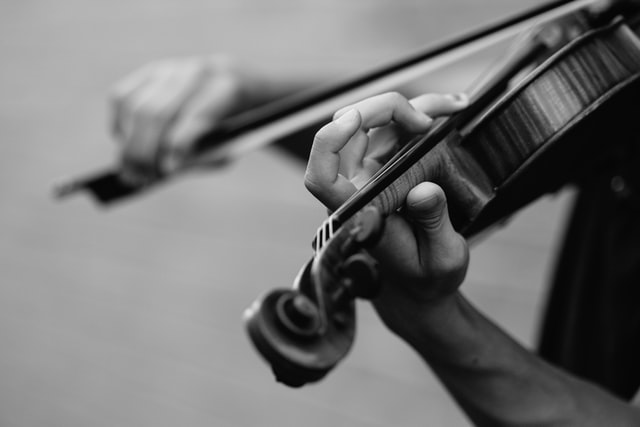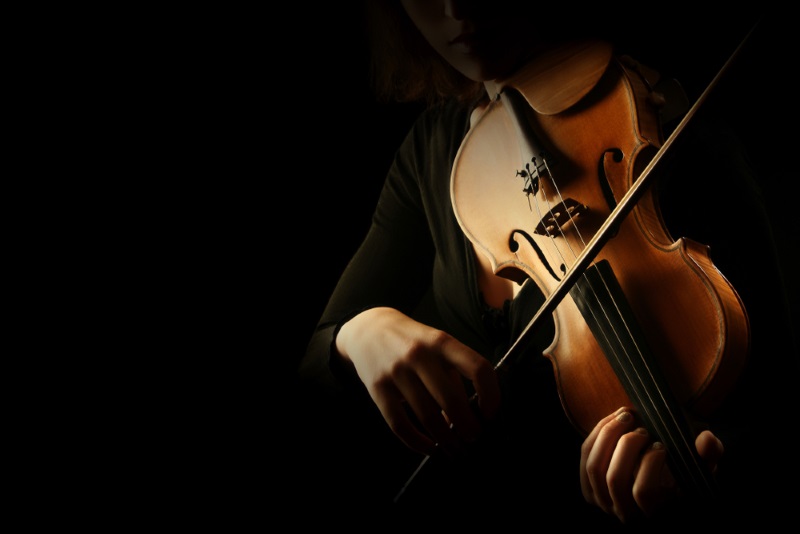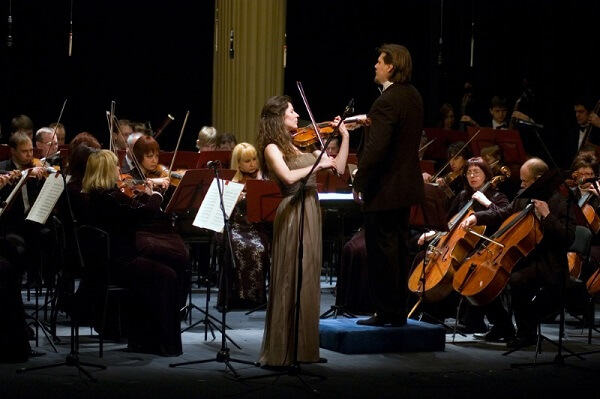The 10 Best Violin Concertos of All Time
This page contains affiliate links. We may earn money or products from the companies mentioned in this post through our independently chosen links, which earn us a commission. Learn More
A violin concerto is a kind of concerto for someone to play with solo violin and other instruments (an orchestra). Over the years, so many great violinists and composers composed beautiful violin concertos. These are played in great halls. Although it is hard to name all of the memorable great ones, the list below mentions just a few of the top.
Violins are very nice instruments for a concerto and are usually in 3 or 4 movements. Moreover, most violinists play these concertos because of the sentiments and patterns that they feel from them.
Top 10 Violin Concertos
1. Bach Violin Concerto No. 1 in A Minor, BWV 1041
This song is by Johann Sebastian Bach between the period of 1717 – 1723. People believe that he wrote it not long after Bach took over the Leipzig Collegium Musicum. It follows the customary Italian formation of 3 movements. These include Allegro Moderato in A minor, Andante in C major, and Allegro Assai in A minor. This beautiful piece has a touching melody and is rich in texture. Moreover, the sentiment behind this concerto will stir your emotions.
2. Bach Concerto for Two Violins in D Minor, BWV 1043
This classical concerto requires the use of two violins, which are strings and continuo. It is by Johann Sebastian Bach. This beautiful concerto has 3 movements which are vivace, largo ma non tanto and allegro. Moreover, the movement follows the typical fast-slow-fast concerto pattern of Baroque. Roxana Pave and Goldstein David Perry. They performed this melodious concert at the Advent Chamber Orchestra. In addition, the melodies, which intertwine with each other beautifully. It is one of the most famous works of Johann Bach.
3. Beethoven Violin Concerto, Op. 61
This concerto is one of the best since it was revived by Joseph Joachim in 1844. Originally composed in 1806 by Ludwig van Beethoven, it is in D major and has been scored for flute, strings, two clarinets, among others. It has 3 movements, the first of which lasts for about 25 minutes. The second and third movements last for about 10 minutes each, with no break between them. Also, the first movement is Allegro ma non troppo.
Furthermore, the second movement is Larghetto which has two variable themes. The third movement is a hybrid called Rondo allegro or Rondo sonata. Moreover, this third movement incorporates a cadenza by Fritz Kreisler. It was revised for piano and orchestra by Beethoven at Muzio Clementi’s request.
4. Glazunov Violin Concerto, Op. 82
In 1904, Alexander Glazunov wrote this brilliant concerto in A minor and dedicated it to Leopold Auer. Leopold first performed this concerto on the 15th day of February 1905 at a concert in St. Petersburg. It has no pauses but has been said to have 3 or 4 movements. Also, it has been duly divided into moderato, andante sostenuto – Tempo 1, and allegro movements. The cadenza of this piece is one of the hardest parts of this concerto.
Furthermore, the technique in composing this cadenza is an extensive double-stopping one. He wrote this in a post-romantic period and contains a lot of special highly romantic effects. Romantics will love the dramatic play of each movement. Over the years, many violinists played this concerto.
5. Mozart Violin Concerto No. 3, K. 216
This concerto was composed in 1775 by Wolfgang Amadeus Mozart when he was 19 years old. It is in G major and has 3 movements namely Allegro, Adagio, and Presto. You can play it with a solo violin, 2 other violins, cello, viola, double bass, 2 oboes (except in Adagio), 2 horns and 2 flutes (in Adagio). Moreover, the Allegro is played in sonata form with a G major theme, Adagio is played in the ternary form on D major. Overall, the beautiful story behind the life of Mozart makes this concerto a very inspiring piece.
6. Tchaikovsky Violin Concerto, op. 35
This violin concerto in D major is one of the best violin concertos. Pyotr Ilyich Tchaikovsky wrote it in 1878 by with 3 movements. The instrumentation of this concerto involves a solo violin, 2 flutes, 2 oboes, 2 A and B-flat clarinets, 2 bassoons, 4 horns in F, 2 trumpets in D, timpani, and strings. All in all, history has it that this concerto was after Tchaikovsky’s failed marriage. The concerto was first dedicated to Leopold Auer and later to Kotek. Moreover, its complexity makes it very difficult to learn and perform. Also, this expressive and creative work is one of the most beautiful pieces in recent times.
7. Mendelssohn Violin Concerto
Mendelssohn violin concerto is one of the most lyrical violin concerti till date. Felix Mendelssohn wrote this E minor concerto for both violin and orchestra. Ferdinand David, Felix Mendelssohn’s good friend, and concertmaster inspired this beautiful piece. Although Mendelssohn was too ill to premiere his work on 13th March 1845 in Leipzig, his assistant took his place.
This work is a nice blend of standard classical structures, Mendelssohn’s taste, and changing times. The 3 movements make up this concerto with no silent moment between each movement. Moreover, a turbulent Allegro molto appassionato in a classical sonata form makes up the first movement. Also, it is immediately followed by a ternary (ABA) Andante. Allegretto non troppo-allergro molto vivace in a hybrid sonata-rondo form makes up the third movement.
8. Brahms Violin Concerto, Op. 77
This is one of the top 4 German violin concertos. This piece is in D major and is the only violin concerto by Johannes Brahms. After composing this concerto in 1878, he dedicated it to Joseph Joachim, his friend and violinist. It features 3 movements namely Allegro non troppo in D major, Adagio in F major, and Allegro giocoso, ma non troppo vivace-Poco piu presto in D major.
Furthermore, the orchestration of this piece includes solo violin, 2 clarinets, 2 flutes, 2 oboes, 2 bassoons, 2 trumpets, 4 horns, a timpani, and strings. The romantic period of its composition makes it a melodious and rich work. Brahms concentrated on showcasing the connection between the soloist and the orchestra in this German favorite. Also, in this piece, he intelligently combines his much-loved Beethoven’s grandeur with the native Hungarian folk rhythms of his friend’s native land.
9. Berg Violin Concerto
Alban Berg wrote this violin concerto in 1935 and scored for violin and orchestra on 11 August 1935. This popular piece was his last. Louis Krasner composed it. Krasner also performed it in the premiere in 1936 after Berg’s death. This concerto classical aimed at reconciling diatonicism and dodecaphony.
Additionally, it has two movements in two sections each and pays tribute to Manon Gropius. The first movement comprises of Andante as the prelude and Allergretto as the Scherzo. Also, the second movement has Allegro as the cadenza and Adagio as chorale variations. Berg completed this work joy and a sense of achievement.
10. Shostakovich Violin Concerto No. 1, Op. 77
Dmitri Shostakovich composed this violin concerto in A minor around 1947-48. Its 4 movements were: Nocturne – Moderato, Scherzo – Allegro, Passacaglia – Andante, and Burlesque – Allegro con brio – Presto. This music expresses a suppression of feelings and carefree abandonment. Moreover, it is an extraordinary success in and outside Russia.
Final Thoughts
In conclusion, the art of composing a violin concerto is one that involves a lot of focus, creativity and overall love for music. To give a better idea, we have reviewed the best violin concertos made of complex patterns, rhythms, and underlying stories.



